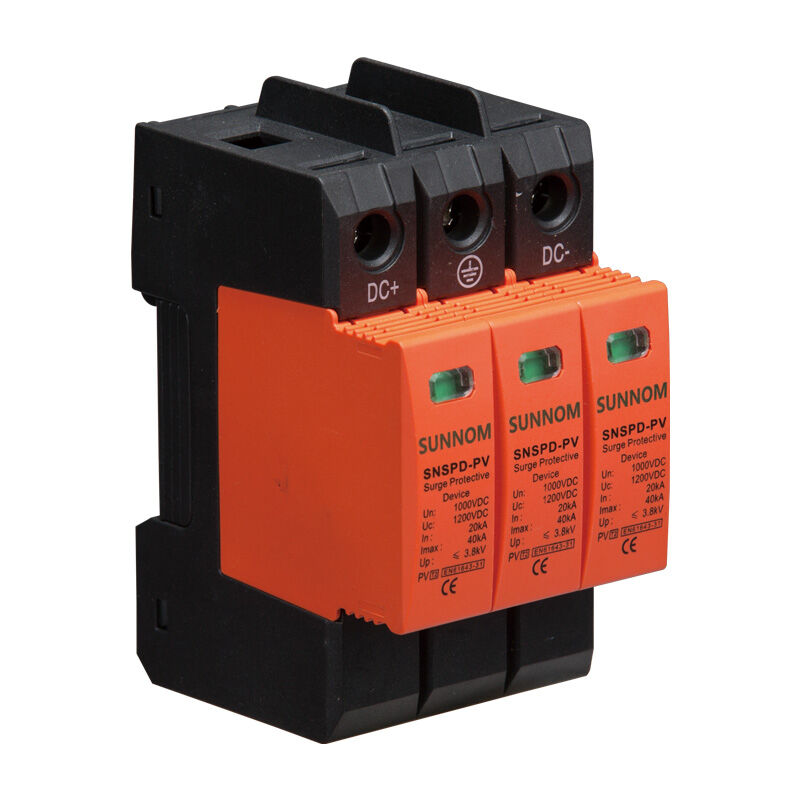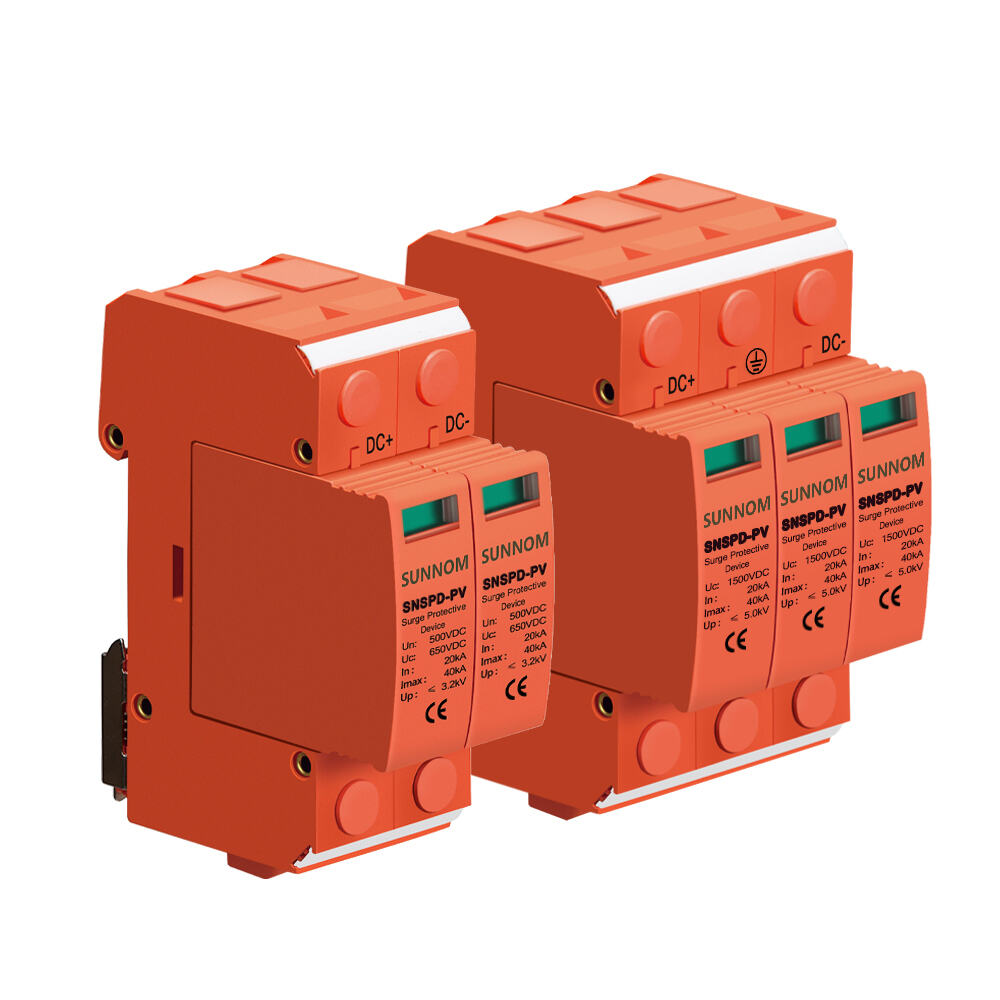Understanding Power Protection Through Surge Arrester Technology
Modern electrical systems face countless threats from power surges and voltage spikes that can damage expensive equipment and compromise safety. A surge arrester protector serves as a critical defense mechanism, safeguarding electrical infrastructure by detecting and diverting dangerous power surges away from sensitive equipment. This sophisticated protection device has become indispensable in both residential and industrial settings, offering a reliable shield against electrical anomalies that could otherwise result in costly damage or catastrophic failures.
The importance of surge arrester protectors has grown exponentially with our increasing reliance on electronic devices and complex electrical systems. These devices work tirelessly behind the scenes, monitoring incoming power and responding in microseconds to redirect dangerous voltage spikes safely to ground. Understanding how these protective devices function and their vital role in electrical safety can help facility managers and homeowners make informed decisions about their power protection strategies.
Core Components and Operating Principles
Essential Elements of Surge Arrester Design
At the heart of every surge arrester protector lies a sophisticated arrangement of components designed to handle extreme electrical conditions. The main element is typically a metal oxide varistor (MOV), which acts as the primary surge suppression component. This specialized material changes its electrical resistance based on the voltage applied across it, effectively creating a dynamic barrier against power surges.
Supporting the MOV are various other components including thermal disconnectors, fuses, and monitoring systems. These elements work in concert to ensure the surge arrester protector can respond rapidly to threats while maintaining its own integrity. The housing is equally important, designed to contain any thermal events and protect the internal components from environmental factors.
Working Mechanism and Response Time
The operational principle of a surge arrester protector revolves around its ability to detect and respond to voltage anomalies instantaneously. When normal voltage levels are present, the device remains in a high-resistance state, allowing regular power flow without interference. However, when a surge occurs, the internal components switch to a low-resistance state within nanoseconds, creating a path for excess voltage to be safely directed to ground.
This rapid response capability is crucial, as power surges can occur and dissipate in microseconds, leaving little time for protective measures to engage. Modern surge arrester protectors can handle multiple surge events while maintaining their protective capabilities, though they do have a finite lifespan based on the number and intensity of surges they encounter.

Implementation and Installation Considerations
Strategic Placement for Maximum Protection
The effectiveness of a surge arrester protector largely depends on its strategic placement within the electrical system. Primary protection typically begins at the service entrance, where a robust surge arrester protector can intercept large external surges before they enter the building's electrical system. This first line of defense is crucial for managing major power events such as lightning strikes or utility switching operations.
Secondary protection points are established throughout the facility, creating a coordinated approach to surge protection. This layered strategy ensures that any residual surge energy that passes the primary protector is further reduced before reaching sensitive equipment. The placement of these secondary devices requires careful consideration of the facility's layout and the specific protection needs of different areas.
Installation Best Practices
Proper installation of surge arrester protectors demands attention to detail and adherence to specific guidelines. The connection leads must be kept as short as possible to minimize impedance, which could reduce the device's effectiveness. Proper grounding is absolutely critical, as the entire surge protection strategy relies on providing a reliable path for surge current to be safely discharged.
Professional installation ensures compliance with relevant electrical codes and standards, while also optimizing the protection system's performance. Regular maintenance checks and monitoring of the surge arrester protector's status indicators help maintain the system's reliability and provide early warning of any degradation in protective capabilities.
Benefits and Long-term Value Proposition
Equipment Protection and Longevity
Installing a surge arrester protector delivers immediate benefits in terms of equipment protection. Sensitive electronic devices, which are particularly vulnerable to power quality issues, gain significant protection against both catastrophic failures and the cumulative damage caused by smaller, repeated surges. This protection extends the operational life of equipment and reduces the frequency of repairs and replacements.
The investment in surge protection often pays for itself many times over by preventing costly equipment damage and avoiding business interruptions. Modern facilities with sophisticated automation systems and sensitive electronics can realize substantial savings through reduced maintenance costs and improved equipment reliability.
Operational Continuity and Risk Mitigation
Beyond equipment protection, surge arrester protectors play a crucial role in maintaining operational continuity. By preventing surge-related disruptions, these devices help maintain smooth operations in critical facilities such as data centers, healthcare institutions, and industrial plants where downtime can have severe consequences.
The risk mitigation aspect extends to safety considerations as well. By preventing electrical equipment failures that could lead to fires or other hazards, surge arrester protectors contribute to overall facility safety. This protective function is particularly valuable in environments where electrical failures could pose risks to personnel or valuable assets.
Frequently Asked Questions
How long does a surge arrester protector typically last?
A surge arrester protector's lifespan depends on various factors, including the frequency and intensity of surge events it encounters. Under normal conditions, quality devices can last 5-10 years, though regular monitoring is recommended to ensure continued protection. Many modern units include end-of-life indicators that signal when replacement is needed.
Can a surge arrester protector prevent all types of electrical damage?
While surge arrester protectors are highly effective against transient voltage surges, they cannot prevent all types of electrical damage. They specifically target surge events and voltage spikes, but other power quality issues like sustained overvoltage or brownouts require different protective measures. A comprehensive power protection strategy might include multiple types of protective devices.
What maintenance does a surge arrester protector require?
Most surge arrester protectors are designed for minimal maintenance, but regular visual inspections of status indicators and physical condition are recommended. Annual testing by qualified personnel can verify proper operation and grounding integrity. Any signs of physical damage or warning indicators should prompt immediate professional evaluation.




